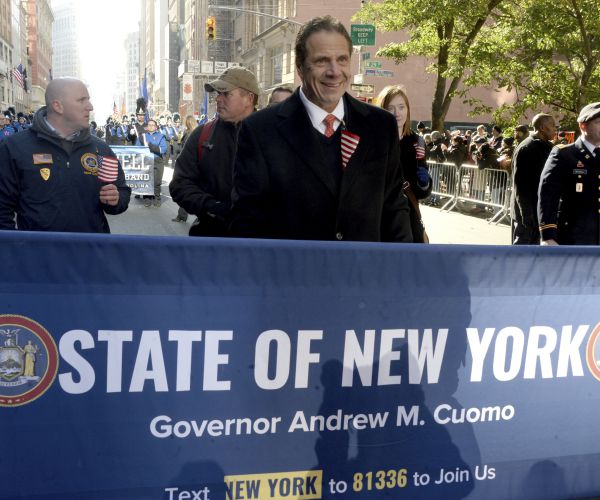When her baby boy is born in March, Kim Lyons will have an added worry. The child needs surgery to remove extra fingers and toes. But she’ll also have an extra safety net.
Under New York’s new paid family leave law, billed as the nation’s most generous, she will be able to take eight weeks off from work at half her regular pay.
“I’m so grateful that I’ll be able to take more time to spend with my newborn,” said Lyons, who lives in Highland in the Hudson Valley. The baby’s father will qualify for paid time-off, too.
On Jan. 1, New York will join California, New Jersey and Rhode Island in requiring employers to give workers paid leave to bond with a baby, care for a close relative with a serious illness or help loved ones during a family member’s military deployment.
The new benefits, which apply to 6.4 million private-sector workers, will phase in over four years.
In 2018, employees can take up to eight weeks of paid leave and receive 50 percent of their average wage, up to a cap weekly cap of $652. When the phase-in is complete in 2021, they’ll be able to take up to 12 weeks at two-thirds of their average weekly wage.
“This is going to be life-changing, especially for low-wage workers,” said Nancy Rankin, of the Community Service Society, a group that advocates for low-income New Yorkers. “Those are the workers who have little or no savings, are in debt, are barely getting by. It’s a real crisis when they have a new child or ill family member.”
Gov. Andrew Cuomo, a Democrat, announced the paid leave legislation in his 2016 State of the State speech. He said he regretted not spending more time with his dying father, former Gov. Mario Cuomo, and noted that many people don’t have that choice because they can’t afford to take time off from work.
He signed the paid leave policy into law in April 2016 along with a $15 minimum wage plan, also being phased in.
Workers — not their employers — will ultimately bear the burden of paying for the leave through a payroll deduction of up to $1.65 a week.
Full-time employees will be eligible after 26 consecutive weeks on the job. Part-time employees qualify after working 175 days in a 52-week period.
“It’s the most significant human resources law in the last 30 years,” said Frank Kerbein, director of the Center for Human Resources at the Business Council of New York State, a business lobbying group. “It’s going to create a tremendous administrative burden, particularly on smaller employers.”
One staffing and record-keeping headache for employers, Kerbein said, is that leave could theoretically be taken in up to 40 one-day increments over the course of the year. An employee could take off the days a spouse with cancer gets chemotherapy treatment, or days when a child has an asthma attack.
“It’s just going to be a challenge in 2018 to get our minds around this complex law,” Kerbein said.
New York’s leave policy would be more generous than California’s or New Jersey’s, which provide six weeks paid leave, and Rhode Island’s, which allows for four weeks.
Washington state also enacted a paid family-leave law that will ultimately be more generous than New York’s. In 2020, it will provide up to 12 weeks with 90 percent of wages for employees who earn less than the state’s average wage, with a weekly cap of $1,000.
“We really should have this at the federal level,” Rankin said. “The United States is the only industrialized nation that doesn’t have government-guaranteed paid maternity leave.”
Under the federal Family Medical Leave Act, employers with 50 or more workers must allow parents 12 weeks of job-protected leave to care for a newborn, but the leave is unpaid.
Lyons said she plans to take New York’s temporary disability leave benefit, which provides $170 a week for six weeks for an uncomplicated delivery, and then the eight-week paid family leave.
“Without this new law, I wouldn’t be able to take that extra time,” she said.
(AP)











